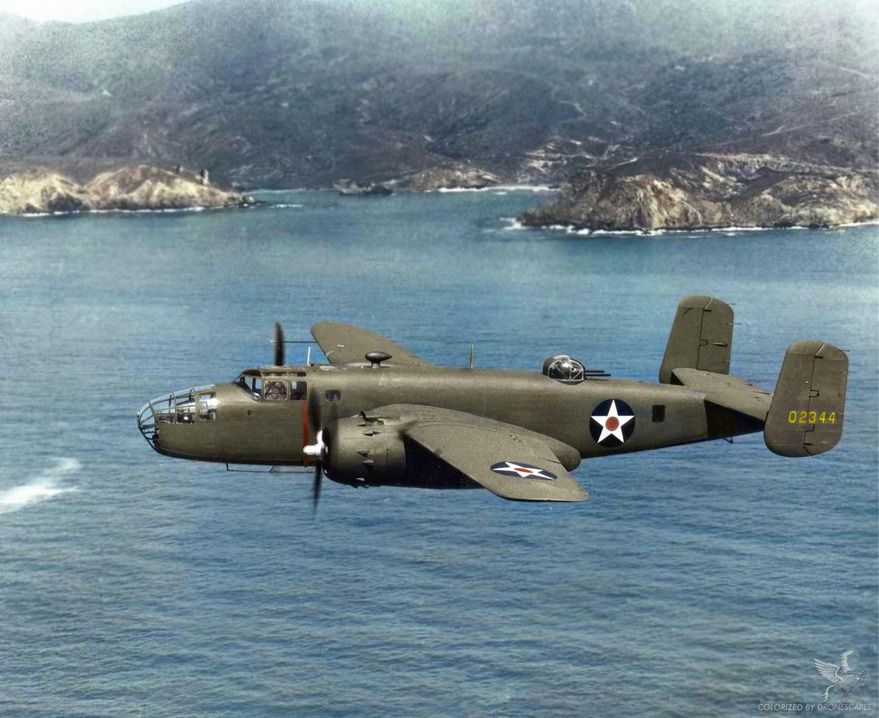History
Following the delivery of 40 B-25As in 1941, self-sealing fuel tanks and armor protection became standard features, as directed by combat reports from Europe. However, the US Army soon recognized that the B-25A’s defensive armament, four .30-caliber and one .50-caliber machine gun, was inadequate. To address this, North American removed all the original guns except the one in the bombardier’s nose compartment. The tail cone was shortened by about one foot, retaining a glazed section to serve as a prone observation post. Bendix electrically operated turrets, each armed with twin .50-caliber machine guns, were installed in dorsal and ventral positions. The ventral turret was fully retractable and operated by a gunner kneeling over a periscope sight, using dual hand controls to traverse the guns through a full 360 degrees under electrical power.
These new defensive systems increased maximum weight by 1,360 pounds compared to the B-25A, reducing top speed by about 15 mph and slightly degrading the rate of climb. The maximum operating range dropped by only 50 miles. Despite these minor performance penalties, the Army considered the improved defensive firepower well worth the trade-off. One distinctive feature of the B-25B was that the right engine’s exhaust stack was noticeably shorter than the left.
A total of 120 B-25Bs were built, with production completed in January 1942. Fifteen were lost in crashes before delivery. Of the remaining aircraft, 23 were sent to the Royal Air Force as the Mitchell I, while two went to the Soviet Union, joined by a third when one of the Doolittle Raid aircraft landed near Vladivostok and was interned.
The most famous B-25B mission was the Doolittle Raid of April 18, 1942. Sixteen modified B-25Bs, led by Lt. Col. James H. Doolittle, launched from the carrier USS Hornet to strike targets in Japan. To prepare for the mission, the bombers were fitted with greatly increased fuel capacity, had their lower gun turrets removed, and replaced their expensive Norden bombsights with improvised $0.20 models suitable for low-level bombing. The raid targeted Tokyo, Kobe, Yokohama, and Nagoya. Flying at just 1,500 feet, all aircraft reached their targets without interception. However, none returned to the Hornet; most crews ditched or crash-landed in China, while one landed in the Soviet Union. Seven crewmen were injured and three killed in action. Eight were captured by the Japanese, with four surviving the war.
Chinese civilians sheltered many survivors, prompting severe Japanese reprisals against the local population, which killed hundreds of thousands. While physical damage from the raid was limited, its psychological impact was immense, boosting American morale and shocking Japan. Four front-line fighter groups were retained in the Japanese home islands rather than being sent to the Solomons, where they were badly needed. Doolittle returned to the United States, was promoted to brigadier general, awarded the Medal of Honor, and given command of new air forces.
By April 1942, other B-25Bs were in combat with the 3rd Bomb Group in Australia, striking Japanese positions in New Guinea. From then on, B-25 operations in the South Pacific steadily increased, especially with the arrival of the newer B-25C/D models.








